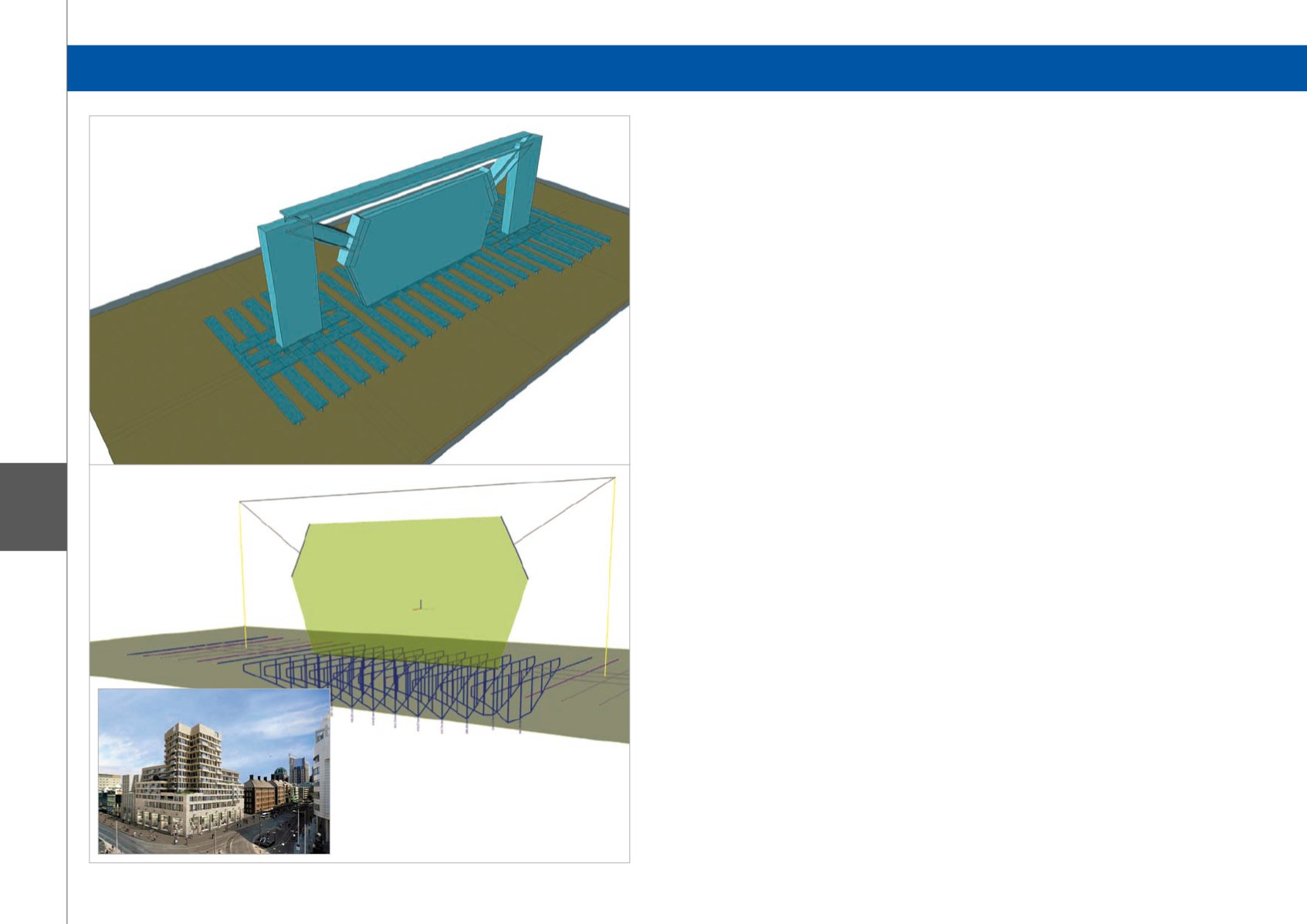
240
X4
Category 4: Special Projects
Introduction
The project concerns the realisation of a new building
in the centre of The Hague. It consists of a parking area
in the basement, a shopping area on the first 3 floors,
and 6 and 12 floors with apartments. Figure 1 gives an
artist’s impression.
The building has been designed by the architectural
firm Bedaux de Brouwer in conjunction with IMd
Raadgevend Ingenieurs, and was commissioned by
the development company Kalvermarkt. It is currently
(March 2013) under construction and is being built
by Züblin Nederland, part of the construction group
STRABAG.
Design
One of the main characteristics of the design is the
fact that the new building is constructed on top of an
existing foundation. A large part of the building site
consisted of a 60-year-old building. This building has
been completely demolished with the exception of its
basement foundation.
The new complex is much larger than the previous
structure. To be able to withstand the much heavier
loads on the foundation on top of the floor slab of the
old basement structure a new raft foundation has been
designed.
The basis of the raft foundation consists of a 400 mm
reinforced concrete slab that is continuous over the
base of the structure. The raft is able to span any area
of weaker soil and it spreads the loads over a wide
area.
An exceptional part of the structure is the foundation
of the very heavy loaded steel-concrete composite
columns. The columns stand on top of walls which are
located in the basement. Each wall carries 2 columns
which are located at the outer ends.
What makes it special is that a large part of the
reinforced concrete wall structure has been replaced by
a steel frame. This appeared to be necessary because
of the very high compression stresses that occur.
Furthermore, it was required to strengthen the concrete
slabs underneath the walls by steel HEM beam frames
to form a ribbed construction.
For the design of this atypical complex structural
element a 3D Scia Engineer model has been made. The
heavy point loads from the columns are transferred and
spread by the walls into a uniform load on the basement
slab. In return the steel floor frames spread the uniform
loads per m1 from the walls into a uniform distribution
soil pressure across the foundation. The structure has
been designed on basis of the assumption that the soil
has the maximum allowable bearing value of 500 kN/m
2
.
In the Scia Engineer model, the steel parts of the
construction are modelled by 1D bar members. The
reinforcement wall and floor sections are included by
use of 2D wall and plate elements.
Construction
The main advantage of using the existing basement
was the enormous reduction of the building costs. On
the other hand, it also required a relatively complex
building process. First of all, the placement of the
aforementioned steel frames is a relatively unique
operation and requires an experienced and skilled
building team.
Furthermore, the possible uplift of the basement during
construction due to the groundwater pressure on
the structure has to be prevented. To avoid this, the
basement has to be temporarily filled with sand bags.
The presence of a tunnel for public transport nearby the
building site has also placed additional requirements on
the building operation.
Software: Scia Engineer
Amadeus Kalvermarkt - Den Haag, The Netherlands


